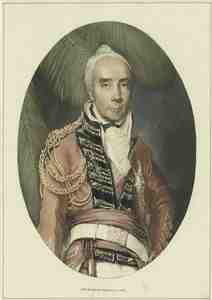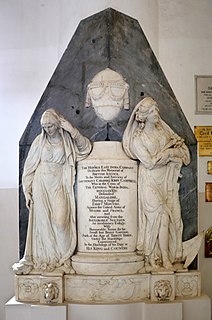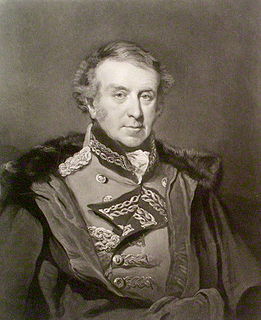 W
WGeneral Sir Robert Abercromby, the youngest brother of Sir Ralph Abercromby, was a general in the army, appointed Knight of the Order of the Bath, a Governor of Bombay and Commander-in-Chief of the Bombay Army and then Commander-in-Chief, India.
 W
WCaptain Barry Nugent Yelverton, 5th Viscount Avonmore was an Anglo-Irish peer and an officer in the 37th Foot, which was renamed as the Hampshire Regiment in 1881.
 W
WMajor Henry Somerset, 7th Duke of Beaufort, KG, styled Earl of Glamorgan until 1803 and Marquess of Worcester between 1803 and 1835, was a British peer, soldier, and politician.
 W
WGeneral Sir George Beckwith GCB was a British Army officer.
 W
WLieutenant-Colonel John Campbell, of Stonefield (1753–1784) was a Scottish soldier known for his defence of Mangalore.
 W
WGeorge Cartwright was an English army officer and a trader and explorer in Newfoundland and Labrador. His name is borne by Cartwright, a settlement at the entrance to Sandwich Bay.
 W
WLieutenant-General Sir Eyre Coote, KB was a British soldier and politician who sat in the House of Commons from 1768 to 1780. He is best known for his many years of service with the British Army in India. His victory at the Battle of Wandiwash is considered a decisive turning point in the struggle for control in India between Britain and France. He was known by his sepoy troops as Coote Bahadur.
 W
WGeneral Sir John Dalling, 1st Baronet was a British soldier and colonial administrator.
 W
WGeneral Sir Hew Whitefoord Dalrymple, 1st Baronet was a Scottish general in the British Army and Governor of Gibraltar.
 W
WGeneral Sir Alexander Duff was a British Army officer of the Napoleonic era.
 W
WCaptain William Hay CB was the second and last junior Joint Commissioner of Police of the Metropolis, one of two heads of the London Metropolitan Police.
 W
WEdward Richard Montagu, Viscount Hinchingbrooke was a British Army officer and politician who sat in the House of Commons from 1713 to 1722.
 W
WMajor-General Sir Herbert Stewart was a British soldier.
 W
WLieutenant-general Sir Charles Stuart,, was a British nobleman and soldier. The fourth son of John Stuart, 3rd Earl of Bute, and Mary Wortley Montagu, he was born in Kenwood House, London. There is a famous painting in the Tate Gallery, London, of him aged 10 stealing eggs and chicks from a bird's nest.
 W
WJohn Fane, 7th Earl of Westmorland, styled The Honourable John Fane from 1691 to 1733 and Lord Catherlough from 1733 to 1736, of Mereworth Castle in Kent, was a British Army officer and politician who sat in the House of Commons in three separate stretches between 1708 and 1734.